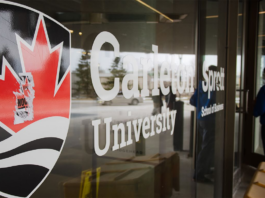Senator Murray Sinclair was the keynote speaker at an Oct. 3 talk discussing the implications of the Truth and Reconciliation Commission on Canada’s educational systems.
The event was hosted by Carleton’s faculty of arts and social sciences and the school of Indigenous and Canadian studies.
Sinclair introduced himself as a senator and former judge, but most importantly referred to his role as the former chair of the Truth and Reconciliation Commission of Canada (TRC). Sinclair held the position from 2008 to 2015.
The TRC is a component of the Indian Residential Schools Settlement Agreement, and was tasked with creating a report on the history and consequences of Canadian residential schools.
Sinclair focused his speech on the history of Indigenous children, and their treatment by the post-Confederation Canadian government.
A key theme was how identity is moderated by both community and institutional development, with Sinclair citing many of the problems that Indigenous communities across Canada currently face due to negligence or abuse.
He said the focus of the TRC had been on creating a report on residential schools and the treatment of Indigenous children, and would eventually include how the public school system of the early Canadian government denigrated First Nations people and culture.
His wife, Katherine Morrisseau-Sinclair, was invited to speak on her experience as the spouse of a commissioner. She spoke about how hard it was for her husband to hear these stories first-hand.
She said that Sinclair had originally rejected the offer to be chair of the commission due to personal reasons, but eventually felt it was his responsibility.
Morrisseau-Sinclair spoke about how she views her husband—the father of her children—and how he is viewed by the rest of the country—as a judge and senator. She related this to the identity crisis that Indigenous youth struggle with in regard to how their history is taught to them alongside broader Canadian history.
“These young people have a right to know who they are, and be reflected in the halls of their university,” she said.
Later, Sinclair discussed the realities the commission had unearthed about childhood abuses, deaths, and the difficulty survivors have had with assimilating to a society that did not want them.
He said this internal tension, as well as the cover-up of what happened, led to many of the demonstrations by Indigenous youth in the past few decades.
“We stood up not because we knew what was wrong, or what was going on, but because we didn’t know what was going on,” Sinclair said.




